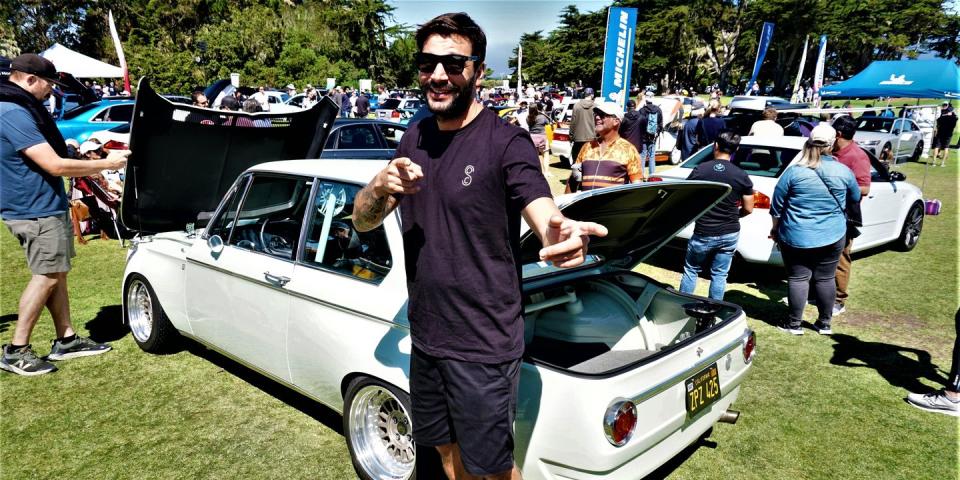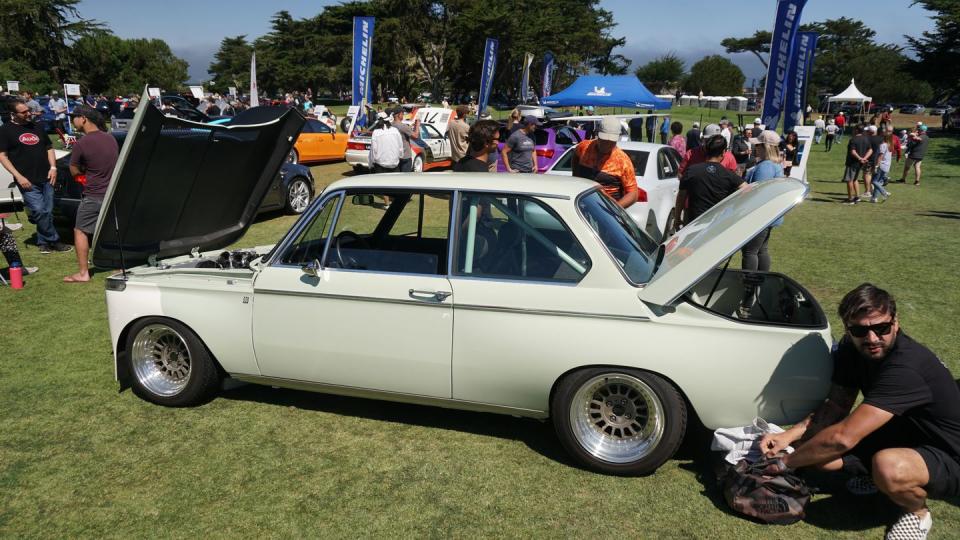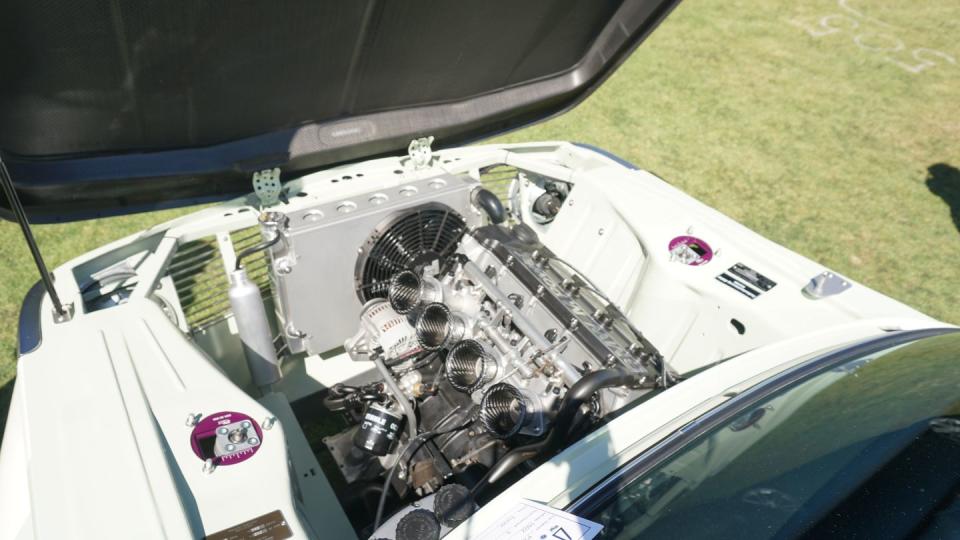This French Surfer Dude Built a Carbon-Fiber BMW 1602

French surfer Paul LeFevre combined his board-shaping skills with his love of small BMWs and created an all-carbon-fiber, 1800-pound, 210-hp BMW 1602.
He started with some fender flares and just didn't stop.
We say, "Pends dix mon frère!" (Hang 10, bro!)
Paul LeFevre grew up on the French coast of Normandy with great surf right in front of him and the towering Pyrenees right behind. When he was a starving graphic design student he couldn’t afford to buy new surfboards so he started making his own, shaping the foam cores and laying down the fiberglass mat just so. As a budding graphic designer, he was also mixing up his own colors for the boards. When he came to the US, to surf-happy California, he kept it up. His surf shop and board-making business in Costa Mesa is called Son of Cobra. Cobra is a board maker based in Thailand, so LeFevre says Son of Cobra is just a name “for fun.” There’s no connection with the Shelby Cobra, either.
But he does like cars, and when he wanted to make wheel flares for his 1969 BMW 1602, naturally, he decided to do it himself.
“So we basically start with the lightest chassis possible, which is the 1602. And then I just wanted to make myself a nice fender pig cheek flare kit that would look pretty decent, but all you can find is race car fiberglass, which doesn't fit well.”
“Pig cheek” is a term for the style of fender flare you see here. The bolt-on fiberglass kits available at the time just wouldn’t do. “For a streetcar it's pretty ugly,” he said.

So he ditched the fiberglass and went with carbon fiber. That was all he wanted to do—fender flares. At first.
“I created one side of the car—clay modeling the whole fenders as I wanted—and then we 3D-scanned that one side of the car and then replicated the other side on a computer to have perfect symmetry on both sides.”
From there, naturally, he made CNC molds of the new parts. “I used all my surfboard-making skills to shape one side of the car, and then I had to use all my contacts in the industry to create the mold for this side. And then from there, since we had the mold, why not do it in carbon fiber to save a little bit of weight?”
Indeed, why not?
“And then why stop there, like, why not do the roof? I had a sunroof car and I just wanted to save weight on the roof. So we took off the roof and then built the roof and trunk and, anyway, I started from there and I finished by ending up doing the whole car—all the bodywork, front and rear fenders, door skins, hood, trunk, roof, as well as the dash.”
Yes, the dash is carbon fiber, too. That's a lot of work. “It took me about a year to have all the molds, all the parts, to put everything together, all the bodywork, paint, and then another year to put everything together.”
That was the outside. “And then, since I was doing all this weight saving, I also wanted to have more power. And then, the more it became like a motorsports-inspired car, I basically wanted to have, like, a race car, all the race car spec on the streets to be able to drive like a race car every day.”
So what did he do? “We ended up putting this S14 motor in, which is a pretty good swap for those cars, the S14 2.3. It's the first (BMW) motorsport motor, and they share the same four-cylinder block, pretty much, very close to the M10, so it's a pretty legit-built swap.”
The S14 engine is the one that went into a number of BMWs, including the E30 M3. So yeah, legit. “It bolts on right up on the original mount of the car, it shared the same pattern of the M10... Yeah, it sounds amazing.”

Notice also the PLS wheels, brought in LeFevre’s luggage when he moved here from France.
The engine pulls 210 hp at the wheels, LeFevre said, and the whole car weighs just 800 kilograms (1760 pounds). Fine tuning was done at the track. A steering rack from a Ford Escort MkI was swapped in, and old-school race bucket seats rounded out the project.
Is it done? “I will say 99%.” Looking at it for a long time there at Legends of the Autobahn, it’s hard to imagine what the missing 1% could be.
You can order a carbon-fiber hood for your 2002 for $2220 from sonofcobra.com. A carbon-fiber roof is $1180. A trunk lid is $1880. A Son of Cobra T-shirt is a very reasonable 38 bucks. The surfboards, meanwhile, range from just over a grand to just under $1500, but they’re not carbon fiber.
“Obviously carbon fiber is pretty bad for a surfboard because you kill all the flex of the board—the carbon fiber is much too stiff for surfboard, but it's very light.”
So here’s what you do: Get the full 2002 kit, then put a surfboard rack on top. Best of both worlds.

 Yahoo Autos
Yahoo Autos